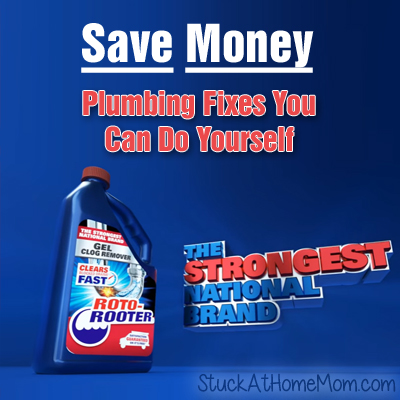

DIY home maintenance is a valuable skill that empowers homeowners to save money and improve their properties. It allows for proactive problem-solving and prevents costly emergencies. Many homeowners feel overwhelmed by the prospect of tackling home repairs, but in reality, many tasks are surprisingly accessible and achievable with the right knowledge and resources. This comprehensive guide provides actionable steps and practical advice to tackle common DIY home maintenance tasks. You’ll learn effective strategies, discover hidden cost-saving opportunities, and increase your confidence in handling your home’s upkeep. This article will cover essential home maintenance areas, from plumbing and electrical to painting and basic repairs.
Understanding the Value of DIY Home Maintenance
The Financial Benefits
DIY home maintenance offers significant financial benefits, allowing you to avoid expensive professional services. Many common repairs and maintenance tasks, such as replacing a leaky faucet or fixing a loose doorknob, can be tackled by a homeowner with a little know-how. Statistics show that homeowners who proactively maintain their properties tend to experience lower repair costs over time. Homeowners can save hundreds or thousands of dollars annually by performing regular maintenance tasks. This reduces the likelihood of major, costly repairs in the future.
The Skill Development Aspect
Beyond the financial benefits, DIY home maintenance enhances your skillset and knowledge of your home. By performing repairs and maintenance, you develop a deeper understanding of how your home functions. You’ll become more familiar with potential issues and can anticipate problems before they escalate. A growing number of homeowners are taking the initiative to handle repairs themselves, leading to greater financial independence.
Addressing Plumbing Issues
Simple Fixes for Leaky Faucets
A common home maintenance problem is a leaky faucet. A dripping faucet can waste significant amounts of water and drive up utility bills. Fortunately, fixing a leaky faucet is often a simple DIY project. To do this correctly, first, turn off the water supply. Locate the faucet’s valve, turn it clockwise, and ensure the water flow stops. Next, carefully remove the faucet aerator to inspect for clogs or debris. If the faucet continues to leak, replace worn washers or components for a perfect fix. Numerous online tutorials illustrate how to replace faucet washers. Many people report savings of over $100 per year by addressing leaky faucets quickly.
Effective Drainage Strategies
Another plumbing concern is clogged drains. Addressing blocked drains proactively keeps your plumbing system in good shape, saving you money. If the blockage is minor, pour a cup of baking soda and vinegar down the drain to see if this can clear it away. If the problem persists, you can employ methods like using a drain snake or hiring a professional drain cleaning service, if the clog is severe. Proactively addressing clogs helps maintain the efficiency of your plumbing system over time.
Tackling Electrical Issues
Replacing Light Bulbs and Fixtures
Changing a burned-out light bulb is one of the simplest DIY tasks. This often saves you the cost of a visit from an electrician. Locate the switch to cut power to the circuit. Then, carefully remove the old light bulb, inspecting the socket for any damage. Install the new bulb, turn the circuit back on, and confirm the new bulb works correctly. This is a cost-effective way to maintain lighting in your home.
Understanding Electrical Safety
Electrical repairs should be approached with care. Improper electrical work can result in serious safety hazards. If you are unsure about any electrical work, it is always best to seek professional assistance. When working with electricity, always ensure the power is turned off at the breaker box before attempting any repairs. Even seemingly minor electrical repairs can pose significant safety risks if not handled correctly.
Enhancing Your Home’s Appearance Through Painting
Preparing Surfaces for Painting
Painting is a valuable DIY home maintenance task that can dramatically enhance your home’s aesthetic appeal. Preparing the surface correctly is essential for a lasting and beautiful finish. Clean the surfaces thoroughly to remove dirt, dust, or loose paint. This is crucial to ensure a smooth, even finish. Prime the walls using a primer to create an even surface and achieve optimal color consistency. Prime before applying paint for better results. The use of primer helps the paint adhere better.
Choosing the Right Paint and Tools
Research the optimal paint type for your project and pick one from a range of options. Selecting the correct tools is crucial for effective results. Consider purchasing brushes and rollers from reputable brands; these will be important for an even and professional finish. Ensure the room is properly ventilated and avoid working in extreme temperatures.
DIY Home Maintenance for Curb Appeal
Maintaining Exterior Features
Proper maintenance of your home’s exterior can enhance curb appeal and protect your property from damage. Inspecting and maintaining exterior features such as gutters, downspouts, and siding can help prevent water damage, which is a significant concern for homeowners. Regular gutter cleaning can prevent water from backing up, causing potential damage to the foundation and interior walls. By addressing these concerns promptly, you can avoid significant property damage and maintain a beautiful exterior.
Landscaping Maintenance
Keeping your landscape maintained will also enhance curb appeal. A neat and well-maintained yard can add significant value to your home and create a welcoming environment. This includes tasks like trimming hedges, mowing the lawn, and weeding flowerbeds. Landscaping maintenance requires time and effort, but the results are often well worth it. Proactively tackling these tasks can ensure a healthy and beautiful landscape.
Cost-Effective Solutions for Home Maintenance
Budgeting for Maintenance
Creating a budget dedicated specifically to home maintenance allows you to proactively address issues. This will help you stay on top of expenses related to upkeep. A detailed maintenance schedule should be developed to identify potential problems before they escalate into larger and more costly issues.
Utilizing Resources for DIY Projects
Numerous websites and YouTube channels offer detailed guides and tutorials on a wide range of DIY home maintenance tasks. This offers easy-to-follow instructions for completing projects successfully.
Prioritizing Preventative Measures
Preventative maintenance measures, like regular inspections and upkeep, are critical for long-term savings. Regular inspections and maintenance will help to avoid costly repair bills.
Prioritizing Safety During DIY Home Maintenance
Essential Safety Precautions
Always prioritize safety when working on DIY home maintenance projects. Proper safety procedures and equipment are essential. This could include wearing appropriate safety gear, such as eye protection and gloves. Ensuring adequate ventilation is necessary, especially during tasks involving chemicals.
Understanding Hazards
Be aware of potential hazards before beginning any project. Understanding the possible risks involved will allow you to plan ahead effectively and mitigate them if necessary.
Seeking Professional Help When Needed
If any task seems complicated or potentially dangerous, seek the help of a professional. Always prioritize your safety and ensure you have the resources you need to complete the task successfully.
FAQ
What are some common DIY home maintenance tasks that I can tackle?
Homeowners can often tackle a range of tasks, from simple plumbing fixes to basic electrical repairs, and even painting. Some projects may include: changing a lightbulb, unclogging a drain, tightening loose fixtures, fixing leaky faucets, or painting a room. For each, there are resources and tutorials online with easy-to-follow steps.
How can I know what tools and materials to buy for a project?
Always research the specific task you want to accomplish. Often, guides and tutorials contain lists of necessary tools and materials, allowing you to carefully plan your purchases.
How can I ensure that I am doing home maintenance projects safely?
Always prioritize safety when tackling any DIY project. Ensure proper ventilation, use appropriate safety gear like gloves and eye protection, and consult experienced professionals if a task seems complex or poses significant risks. Remember to read instructions carefully, and if you feel unsure about any part of the process, always seek professional assistance.
In conclusion, DIY home maintenance offers significant savings and empowers homeowners to take control of their property’s upkeep. By understanding the basics of common repairs and proactively addressing potential issues, homeowners can prevent costly problems down the line. We encourage you to start small, research thoroughly, and always prioritize safety. To get started, consider one or two of the easy fixes detailed in this guide and, as your confidence grows, gradually tackle more complex projects. Happy home maintenance!